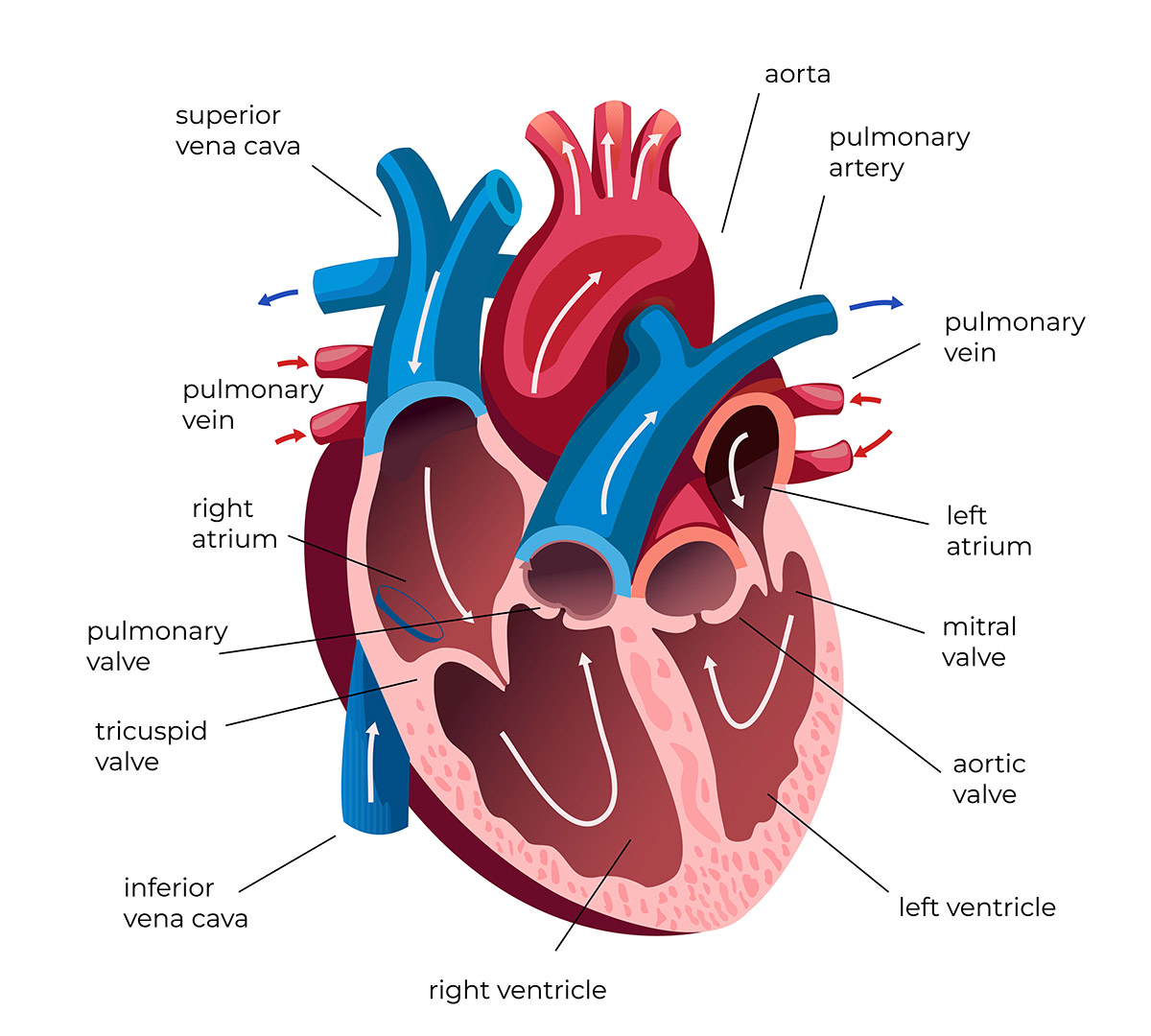Welcome to Northern Heart Hospital’s blog! Today, we’re diving into the beating centre of your body – your heart! This powerhouse muscle is vital for life, so understanding its anatomy and how to keep it healthy, can be lifesaving.
Get to Know Your Heart

Your heart is a remarkable organ, about the size of your fist, and it works tirelessly, beating around 100,000 times a day to pump blood throughout your body. Let’s understand the different parts of this organ:
Chambers and Valves
The heart has four chambers—two atria (upper chambers) and two ventricles (lower chambers). The right atrium receives deoxygenated blood from the body and pumps it into the right ventricle, which sends it to the lungs for oxygenation. The left atrium receives oxygen-rich blood from the lungs and pumps it into the left ventricle, which sends it out to the rest of the body.
Between the chambers there are valves which open and close to help blood move in the correct direction, along its path. In the right ventricle, there is tricuspid valve and pulmonary valve. In the left ventricle there is mitral valve and aortic valve.
Blood Vessels
The major vessels include the aorta (carries oxygenated blood to the body), pulmonary arteries (carry deoxygenated blood to the lungs), pulmonary veins (bring oxygenated blood back to the heart), and the vena cava (returns deoxygenated blood from the body to the heart).
Electrical System
The heart’s rhythm is controlled by electrical signals that start in the sinoatrial (SA) node, the heart’s natural pacemaker, and travel through the atrioventricular (AV) node to the ventricles.
Heart Health: Tips for a Strong Ticker
Keeping your heart healthy is crucial, and it doesn’t have to be complicated. Here are some tips to keep your heart in top shape:

1. Eat Smart
a) Fruits and Vegetables
Aim to fill half your plate with a variety of colourful fruits and vegetables. They are packed with essential vitamins, minerals, and antioxidants that support heart health.
b) Whole Grains
Incorporate whole grains like brown rice, quinoa, oats, and wholemeal bread into your diet. These foods are high in fibre, which helps reduce cholesterol and maintain a healthy weight.
c) Lean Proteins
Choose lean protein sources such as chicken, fish, beans, lentils, and tofu. These options are lower in saturated fats compared to red meat and processed meats.
d) Reduce Saturated Fats, Salt, and Sugar
Limit foods high in saturated fats (like butter, cheese, and fried foods), added sugars (like sugary drinks and desserts), and salt (like processed snacks and tinned soups). Excessive consumption can lead to high blood pressure, high cholesterol, and increased risk of heart disease.

2. Stay Active
a) Moderate Aerobic Activity
Engage in activities like brisk walking, cycling, swimming, or dancing for at least 150 minutes per week. These exercises improve cardiovascular health by strengthening the heart and improving blood circulation.
b) Vigorous Activity
For those who prefer more intense workouts, 75 minutes of activities like running, aerobic dancing, or hiking uphill can provide similar benefits to longer durations of moderate exercise.
c) Muscle-Strengthening Exercises
Include activities like weight lifting, resistance band exercises, or bodyweight exercises (like press-ups and squats) at least two days a week. These exercises help build and maintain muscle mass, improve metabolism, and support overall physical health.

3. Quit Smoking
a) Heart Health Risks
Smoking damages the lining of the arteries, leads to the buildup of fatty material (atheroma) which narrows the artery, and increases blood pressure. This combination significantly raises the risk of heart attacks and strokes.
b) Benefits of Quitting
Quitting smoking can rapidly improve your health. Within a year, the risk of heart disease drops significantly, and over time, the risk can become similar to that of a non-smoker. There are also broader health benefits, such as improved lung function and reduced risk of cancer.

4. Manage Stress
a) Impact of Chronic Stress
Prolonged stress can lead to behaviours and conditions that increase heart disease risk, such as high blood pressure, smoking, overeating, and physical inactivity.
b) Relaxation Techniques
- Yoga
- Combines physical postures, breathing exercises, and meditation, which can reduce stress and improve cardiovascular health.
- Meditation
Regular meditation helps lower stress hormone levels, reduce blood pressure, and promote a sense of calm. - Deep Breathing Exercises
Simple deep breathing techniques can help lower heart rate and blood pressure, promoting relaxation.

5. Regular Check-ups
a) Blood Pressure Monitoring
Regularly checking your blood pressure can help detect hypertension early, allowing for timely intervention to prevent heart disease.
b) Cholesterol Levels
Regular screenings for cholesterol levels can identify risks for heart disease. Managing cholesterol through diet, exercise, and medication (if necessary) is crucial.
c) Health Screenings
Regular health check-ups, including blood tests, ECGs, and other screenings as recommended by your healthcare provider, can help detect early signs of heart problems and other health issues, allowing for early treatment and better outcomes.
References:
- American Heart Association (AHA)
- Mayo Clinic
- National Health Service (NHS)
- Centre for Disease Control and Prevention (CDC)
- Johns Hopkins Medicine
- British Heart Foundation (BHF)
